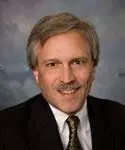
I look back on 2015 with a degree of satisfaction I've never felt before! Why? Because several years of "reinventing" Todd Herman Associates (THA) had finally paid off! That's not to say 2015 did not bring its own set of challenges – it did, yet 2015 saw numerous successes as well!
Why 2015?
While the "new" THA came into its own in 2015, I believe I finally "came into my own" as the firm's leader. My basis for saying this? I realized I had now internalized many practices I'd been working hard to implement over many years.
Back in July 2013, my coach had an amazing insight and distilled my main responsibilities into four areas:
- Billable Hours (BH) – This reflects the time my staff and I spend serving clients. My goal should be to get as many BH as possible, and is my highest priority.
- Fill the Pipeline (FP) – This consists of all the time I invest in marketing, networking, and selling. I say "invest" because activities in these areas rarely pay off immediately.
- Manage the Practice (MP) – This encompasses all the "behind the scenes" time I "spend" (for example handling emails, and various administrative and personnel matters) or "invest" (for example in internal process and technology improvements) to keep THA running.
- Other (OT) – This reflects everything else, including time for vacation, holidays, coaching, and continuing education.
Over the years, she and I have refined how we work together several times. Each time, we look for ways to help me better develop the knowledge, attitude, skills, and habits needed to succeed in my key areas of responsibility.
In early 2015, we once again refined how we worked, developing a list of specific tasks I needed to get done before we met again. These task lists – defined, implemented, and evaluated, – every two weeks like clockwork – caused everything to finally gel by mid-2015!
Little Tasks, Big Results
Here's a partial list of these 2015 tasks, and how they played out during the year:
- Weekly Staff Meeting (WSM) – I had resisted this idea for years because my staff grumbled about taking time away EVERY WEEK from serving clients or performing their jobs. I had succumbed to their grumbling and developed the same attitude myself ... until I realized, to finish reinventing THA, I needed to get everyone on the same page and KEEP them on the same page, week in and week out. So, despite grumblings, on Monday, April 20th we instituted the WSMs, using a highly structured – and timed – format my coach and I devised. Initially awkward and occasionally devolving into detailed discussions more appropriate to a separate meeting, the WSM has met its goals! Everyone (including me) shared ...
- What they had accomplished last week,
- What they planned to accomplish the upcoming week, and
- What assistance they needed from the firm members to meet their goals.
This format allows me to monitor how well each staff member is doing week to week, as well as tweak their plans to better align with what THA needed.
- Publicly Stated and Reported Goals – The WSM requires each person to publicly state a week's goals and then publicly report on these the following week. What's one generally accepted technique to improve the odds of meeting your goal? You guessed it – publicly stating your goals, and then having to publicly report your results! While there might be some peer pressure for everyone to meet his or her goals, the main pressure is internal – each person's natural desire to live up to their announced goals.
- Publicly Stated and Reported Billable Hours – With THA's new cost structure firmly in place by the end of June 2015, I determined the firm's new breakeven point, and then translated this into a graphic illustrating our levels of profitability, given varying levels of billable hours. After sharing this chart during a WSM in early July 2015, I then implemented another idea from my coach – for each consultant to state his or her billable hour goal for the upcoming week, and then report against it the following week. What happened? There were some initial misses of actual versus estimates, yet the overall number of billable hours went up – and stayed up!
- Increased Visibility at Clients – To keep the firm's name top of mind, I began dropping in to say "hello" to clients. I did this, even if – or especially if – we did not have any active projects at the time. Doing these dropbys helped me uncover some needs we could meet, and give a few referrals for other needs our clients had.
- Attending High-Value Events – There are plenty of people who want to introduce themselves to me, and I had accommodated a fair number of them in years past with a coffee. To make better use of my time, I became very selective in meeting someone one-on-one, and changed to meeting them at an upcoming event we were likely to both attend. I then focused on attending only events having at least several clients, prospects, or proven referral sources – and I deferred to my coach's decision on which events met these criteria. Results? While I initially felt guilty limiting my time spent with others, I realized it was either "limit my time" or "work more to make it up." A funny thing happened – I actually got MORE referrals from this rifle-like approach than from my previous shotgun approach.
- Delegating More – With turnover in my Business Development position early in 2015, my coach finally got one of her longstanding wishes – I was forced to delegate more. When filling this position, the best candidate could only commit to 25 hours a week, unlike the 40 hours of her predecessor. Furthermore, the best candidate had experience as an executive assistant, and intuitively knew how to truly be my "right hand." With fewer hours available, I had to better explain what I needed done, and then FULLY turn things over to her. Result? Tasks got done, with less of my time, and with an amount of time and a level of quality appropriate to the task's importance.
- More Process and Technology Improvements – Many of the applications we use to run THA have been developed internally, especially in the Business Development area. Fewer staff hours forced my new associate and me to look for EVERY way possible to best leverage her limited time, so we mapped out some key processes, consciously looked for process and technology improvements, and then developed and deployed these. The results? While 25 hours cannot make up for 40 hours, all essential sales and marekting-related tasks are getting done.
Of course, many other smaller tasks were planned and completed.
Slowly, But Surely
While none of these tasks was earth-shattering, the cumulative effect was substantial. "Slowly but surely" was how my coach and I assessed the performances of THA and me in 2015.
We applied the "slowly but surely" approach – especially in "behind the scenes" areas such as internal process and technology improvements – like this: Given limited time of my staff and myself, we consistently asked the question "What is the ONE task that is "Most Important Now"? (MIN)
Although the impact of our "slowly but surely" and "MIN" approach was hard to see at first, it is clearly visible in hindsight. It worked like erosion – wind and water do not visibly wear down a rock in a single storm, yet the cumulative effective over many years rounds mountains and produces soil.
Key Takeaways
What ideas can you take away from my 2015 and apply for yourself in 2016?
- Focus on What You CAN Do – Focus your attention on what you CAN control (yourself) versus what you can merely influence (others).
- Pay Attention to Detail – Once you decide your area(s) of focus, look for even the smallest of improvements – numerous small "wins" compound over time into a big "WIN."
- Hold Yourself Accountable for Results – What was your goal or action step? Did you achieve your goal or complete your task? The answer is either "Yes" or "No." Any other answer means you're focused on intentions instead of results. Only results count.
- Get an Accountability Partner – No matter how honestly you believe you are holding yourself accountable, you're never as objective as another person. A coach is an ideal accountability partner. If you can't work with a coach, then select a person who you trust and respect, yet is not a friend, family member, or immediate colleague – such a person is too close to provide the needed Third Party Objectivity (3PO). An acquaintance in another department or at another company can provide a 3PO viewpoint. Share your goals or actions steps with that person, set the date and time of a followup meeting no more than 30 days in the future, and go over your results in person. From experience, I know just having that meeting date on your calendar provides incentive to get things done.
- Allow Others to Hold You Accountable for Results – If you receive a performance review, I hope you have a performance plan upon which to base the review.
- Don't have one? Create one, discuss it with your manager, ask her to sign it and place it in your personnel file, and then use it as the basis for your next performance review.
- Have a performance plan, yet your goals are fuzzy? Create better goals – based either on specific results or action steps – and give them to your manager, asking her to substitute them for the fuzzy ones and then to rate you on them at your next review.
Trust me, your manager WILL look at you differently for having taken either step. You will have earned her respect and made things easier for her by distinguishing yourself from your peers. To use a football analogy – you spotted the ball, then asked her to grade you based on how far and fast you move it.
- Hold Others Accountable for Results – If you have subordinates, hold them accountable for results, both directly via a performance plan and performance review, and indirectly versus goals shared publicly in staff meetings. You don't have subordinates? No matter – share this article with your manager and ask him to consider structuring staff meetings as we do, and volunteer to be the "guinea pig." Just doing this will up your value to your manager.
- Practice Makes Perfect – Get used to doing all of the preceding steps repeatedly. Yes, doing so is boring – and I just HATE doing boring things. While I'd prefer to be developing new ideas instead of implementing the same old ones, I know results come from repeatedly doing the little mundane things until they become second nature.
PA => PB in 2015
By practicing personal accountability for achieving results or completing action steps consistently in 2015, I turned in a performance I view as my best ever! Just a few years ago, I first heard the abbreviation "PB" from a friend who ran varsity cross country when we were both at Wake Forest. Competitive even after college, she was less concerned about winning a race than surpassing her previous "personal best."
What a revelation! I no longer had to beat some imagined standard of performance – say, to become Peter Drucker's "Effective Executive." I merely had to consistently improve upon my own performance until it become MY "PB." And that's what 2015 means to me – it's the first year ever I've consistently hit my PB as the leader of THA.
And my goal for 2016? To raise the bar even higher and once again set a NEW personal best!
Sincerely,
![]()
Todd L. Herman






